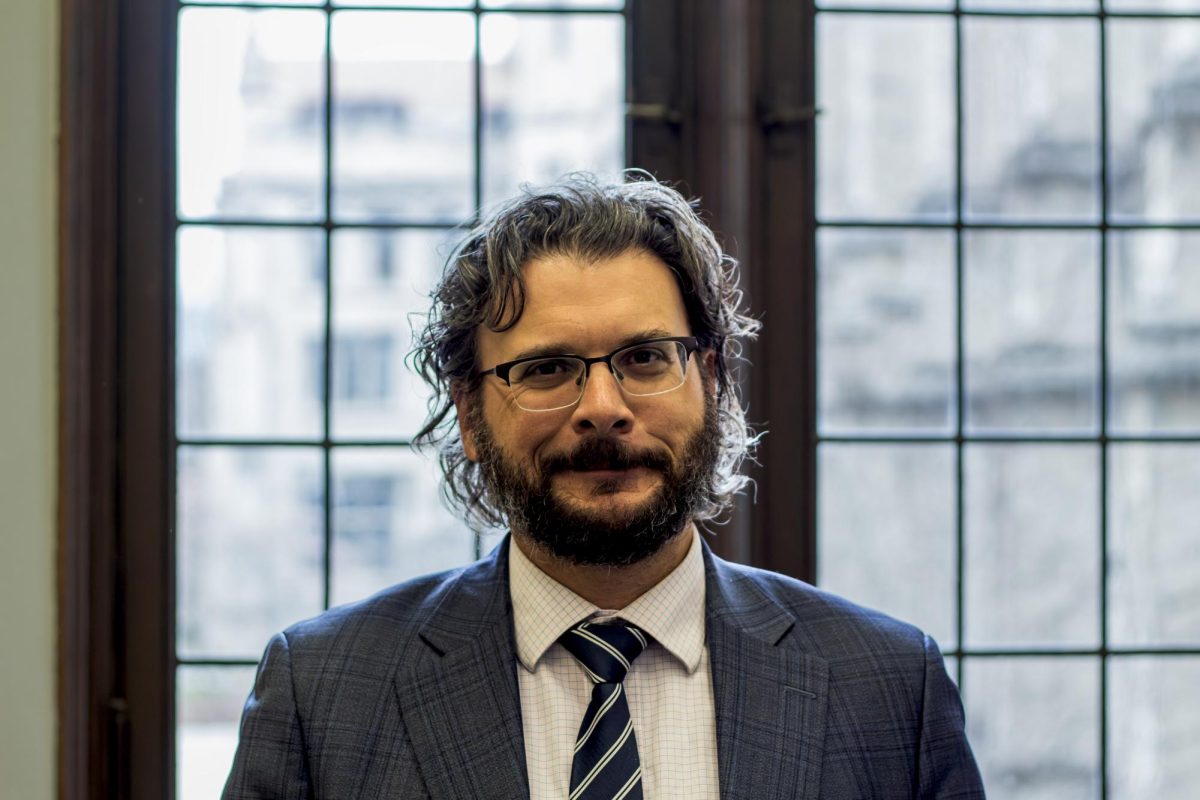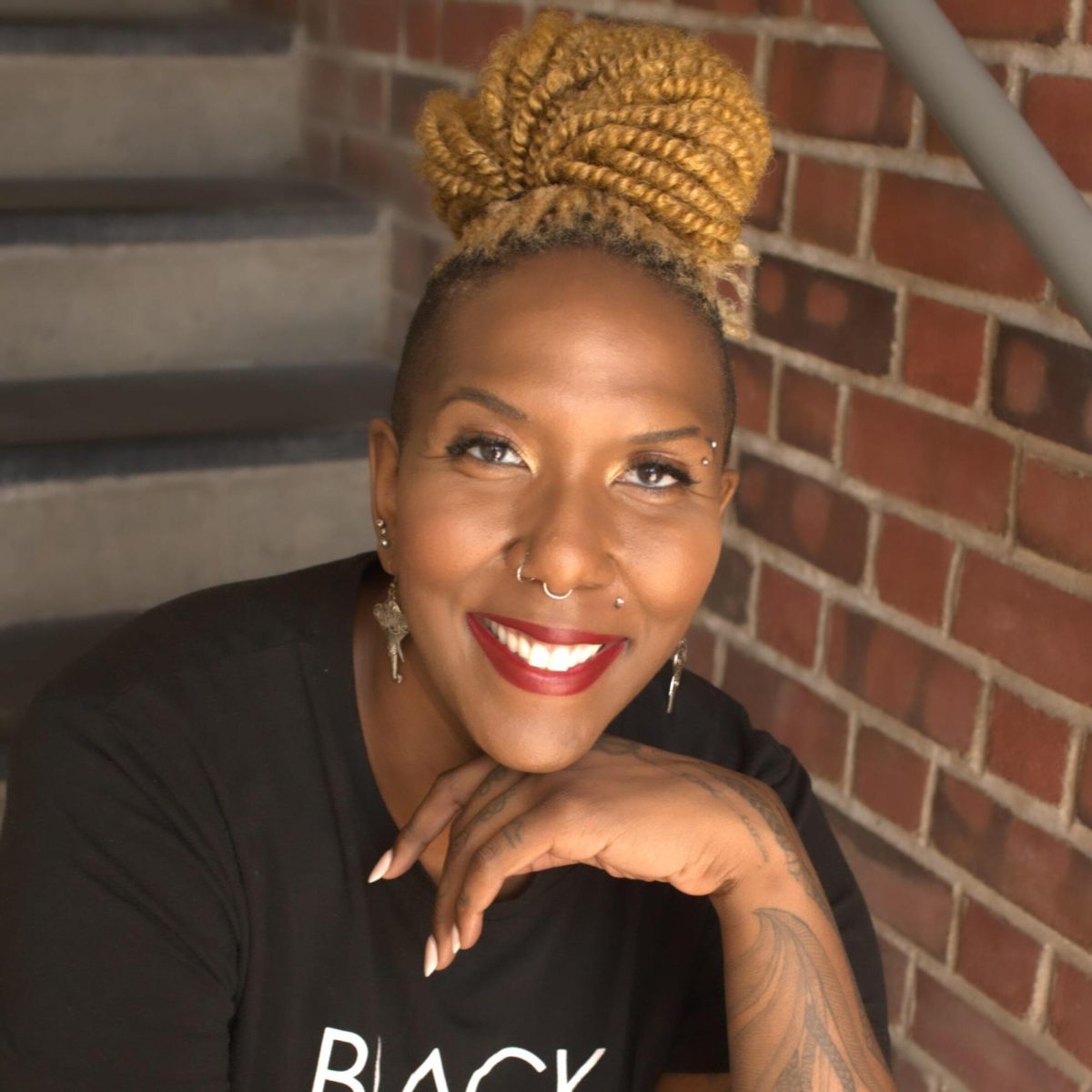At 1:00 p.m. last Sunday afternoon, Dean of the College John Boyer, sociology professor Terry Clark, and Vice-President of Community and Government Affairs Hank Webber led 40 bicycle-mounted students out of Bartlett quad for an educational tour of the south side.
Boyer, Clark, and Webber gave “complementary comments” at several stops from the perspectives of history, sociology, and the University’s relationship to the South Side and the city at large.
The first stop was the DuSable Museum of African-American History in Washington Park, which was originally the headquarters of the Chicago Park district and now contains the papers of the Harold Washington administration.
“In the 1870s, the city fathers of Chicago decided that Chicago lacked only a great park in order to become the world’s greatest city,” Webber said. Chicago furnished a competition won by Frederick Law Olmsted, the designer of Central Park in New York City. Olmsted designed Washington Park, Jackson Park, and the Midway Plaisance to be connected. The Midway was meant to be a canal, which explains the sunken fields.
The group then biked up Drexel Avenue to 35th Street, passing the Universal Circus, a cultural event in Washington Park, and the headquarters of Jesse Jackson’s organization, Operation Rainbow PUSH. Passing by the Ryerson, Rosenwald, and Swift mansions in Kenwood, as well as the site of Marshall Field’s home, the academic entourage continued its trek.
Edward Ryerson was on the first Board of Trustees for the modern University of Chicago, and, next to Rockefeller, was one of the most generous donors to the University. He also donated significant sums to the Art Institute of Chicago. “You can see the incredible former wealth of the area,” Boyer said. “Kenwood has come back in recent decades.”
Webber agreed, adding that Kenwood’s rehabilitation has been a “house-by-house revival.” The height of Kenwood’s affluence came during the 20-year period between 1890 and 1910; it was a place that Webber described as the Gold Coast of that era. After the population of Kenwood, and of the South Side in general, declined dramatically, some University professors began to buy the depreciated mansions.
“But it’s important to recognize that houses with 21 rooms were not built for colleagues of John and I and Terry—they were built for people who owned steel companies and other such robber-barons of the age,” Webber said.
The bikers passed by new housing developments along Drexel and arrived at Stephen Douglas’s tomb. “You’ll remember that Douglas was sort of the ‘other person’ in the Lincoln-Douglas debates of 1858. Douglas won the election, but Lincoln went on to bigger fame and glory,” Boyer said. Douglas died of typhoid fever in 1861, a few months after the Civil War began.
Douglas thought that it would be good for property values to have more of an intellectual investment in the area, and donated 10 acres to the local Baptist church to create the first University of Chicago. When he died in 1861, he left no bequest, causing problems for the University. “The University never really for three decades established a footing in Chicago,” Boyer said.
In 1886, the school declared bankruptcy. Some alumni of the institution, led by Thomas Goodspeed, approached John. D. Rockefeller to ask him to fund a second attempt at a University of Chicago. When the second university opened its doors in 1892, it re-granted degrees to the alumni of the first.
Boyer then talked about Camp Douglas, a famous prison camp during the Civil War. The men who died in the camp are buried in the Oakwood cemetery south of the University, where William Rainey Harper was initially buried before he was moved to Rockefeller Memorial Chapel.
Webber stepped in to discuss the construction that is taking place along Drexel Avenue. Between 1950 and 1990, 837,000 people left the south and west sides of Chicago, the largest number of people ever to leave an American city in a 40-year period.
In the last 10 years, both private and public organizations have worked to rebuild the areas that were depleted. Two of the developments are replacements of Wells-Madden Park and Jazz on the Boulevard, two high-rise public housing developments torn down by Chicago in recent years. Chicago has replaced 25,000 units of public housing with mixed-income developments like these in the past five years.
“This is one of the great watched social experiments in the rebuilding of cities in the country,” Webber said. According to Webber, there is great debate about whether it will be successful and what success would look like.
Clark, who is on a council formed by Fourth Ward Alderman Toni Preckwinkle to examine the quality of life in these developments, is working to smooth over potential social conflicts between the different groups who will live here. Clark said the group is looking at cultural institutions like religions, gospel, and jazz to create a cohesive community in the area.
The group then biked to IIT, an engineering school, and talked about the Bauhaus and postmodern architecture of the campus, including the new Helmut Jan dormitory visible from the Green Line, and the Rem Koolhaas student center with a metal appendage that wraps around the tracks.
In the 1980s, the University of Chicago struck a deal with IIT to house its books in Crerar Library, creating one of the best science libraries in North America according to Boyer.
The group then cycled through Bridgeport and Chinatown and past the Prairie Avenue district, the other great mansion district of the South Side and an area that is currently being rehabilitated. Mayor Daley lives near this area in the South Loop, though he will soon move into a new tower overlooking Millennium Park.
The students saw the museum campus and Soldier Field, from which fans could be heard cheering for the Bears, before turning west on Roosevelt Avenue over the river to the Hull House.
At UIC, the professors noted the dramatic architecture, with a student center designed by Walter Netch, who also designed the Regenstein Library.
Webber is working with several professors at UIC on a course to be taught in January that introduces a new approach to sociology, rejecting the postmodernist “Los Angeles school,” postulating instead that “postmodernism plus Marxism is not the way to understand cities in America today.” He calls their approach the New Chicago School.
Boyer said that UIC’s construction was subject to enormous controversy when it moved from being a junior college at Navy Pier to its current location and status as a major research university in what was then a mostly Jewish area. The branch in Champaign-Urbana also disapproved of creating another major campus in Illinois’s university system, and relations between the campuses, according to Boyer, “are still somewhat tense.”
UIC also displaced the historic Maxwell Street Flea Market as part of the effort to revamp the “picturesque but still somewhat decrepit” neighborhood and make it suitable for a residential university, according to Webber. The city helped the organizers to build a huge residential area around the campus.
Webber noted that the difference between the rehabilitation efforts of the South Loop and the area around UIC from those near the University of Chicago is that the efforts around UIC have completely displaced the original population and added a new one, whereas the changes in South Kenwood have preserved the makeup of its original population.
Riding a bit southeast of the campus, the bikers saw the second version of the flea market, where vendors sold Mexican food, bootleg DVDs, and clothing. The group cycled south from this area to the Daley house, where Richard J. Daley I lived while he ruled Chicago and where Richard M. Daley II grew up. The house is a rather modest brown-brick bungalow near some large housing projects.
Alex Wilson, who took care of the safety aspect of the ride with a few bike marshals from the Chicagoland Bicycle Federation, said that it was remarkable that Daley I, who could have live in any location he wanted, believed so much in his plans for public housing that he decided to place himself and his family so close to the largest ones.
Terry remarked that though Daley II “speaks Chicago Public Schools’ English and wears his father’s suits, he’s really running a Harold Washington administration” due to his emphasis on multicultural reform.
The group then headed back to Bartlett quad down Michigan Avenue and State Street and through Washington Park.
Clark began leading tours of the South Side on bicycle for his class on urban development 10 years ago. Boyer joined Clark four years ago and opened the event to the entire community. An organization advocating bicycle use among students in Chicago has also joined the group over the years and acted as bike marshals at the intersections. “We used to lose about 10 people at every intersection,” said Clark. The trip has grown every year until last year when the expedition had approximately 120 participants.









